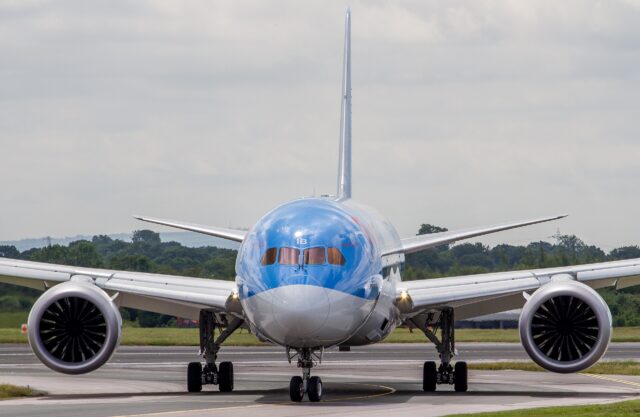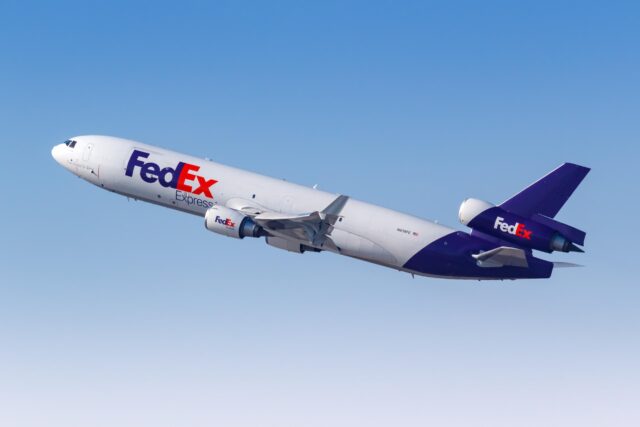How self-healing aircraft materials could revolutionise aviation safety and maintenance

October 17, 2025

When a hairline crack appears in the wing of an aircraft at 35,000 feet, the consequences can be catastrophic. But what if the aircraft could sense that damage and fix it before anyone even knew it existed?
That question is no longer theoretical. In a laboratory at the University of Alabama, aerospace engineers are developing aircraft materials that can detect and heal structural damage in real time.
The research, led by Professor Samit Roy, the William D. Jordan Professor of Aerospace Engineering and Mechanics, could one day allow airframes to repair themselves mid-flight, a breakthrough that promises to redefine aviation safety and maintenance.
“Nature already does this; our bodies detect and heal damage,” Roy explains. “We’re simply applying that concept to engineered systems.”
His team’s work, housed in the Advanced Composite Materials Lab and the Advanced Materials Processing Lab, focuses on creating smart composite structures: materials embedded with sensors that act like a nervous system, continuously monitoring stress and strain.
When damage occurs, these sensors trigger a healing response, restoring structural integrity without human intervention.
How self-healing aircraft materials work
The principle may sound futuristic, but its inspiration is ancient.
“A composite,” Roy reminds his students, “is any material composed of more than one constituent. The oldest known composite is wood fibres surrounded by a cellulose matrix. Even the Wright brothers built their first aircraft using wood and fabric.”
Today, his lab uses carbon fibre-epoxy composites enhanced with shape-memory polymers and thermoplastic powders.
When a crack forms, the embedded sensors detect it, generate heat, and activate the thermoplastic material, which flows into the fissure and re-solidifies. The damaged area effectively heals itself, restoring strength within minutes.

“The idea came to us more than a decade ago while we were improving damage detection in composites,” Roy says. “Eventually, we asked — what if we could also heal that damage using the same network of sensors?”
Initial funding from the US Air Force helped move the concept from theory to prototype. Since then, Roy’s team has published a series of studies and filed patents as they refine the system for full-scale aircraft applications.
AI and digital twins: the brain behind the healing
Behind the materials lies a digital brain. Roy’s system integrates artificial intelligence with digital twin technology — virtual models that mirror real aircraft and constantly update with live sensor data. He calls it a “digital twin on steroids.”
This model not only predicts structural stress but also determines the severity of damage and initiates a healing response automatically. In effect, the aircraft becomes aware of its own condition and responds before a fault can escalate into failure.
The approach aligns with what NASA predicted in a 2011 study on self-healing polymer composites, which found that “autonomous sensing and repair” could transform aerospace maintenance by reducing inspection costs and extending service life.
Roy’s work now turns that projection into practice, enabling condition-based maintenance systems that fix themselves instead of waiting for scheduled checks.
Why self-repairing technology matters for defence and space
The implications reach far beyond commercial airliners. In space exploration, where human intervention is impossible, or in combat zones, where repairs may be delayed for days, self-healing materials could be life-saving.
“This doesn’t eliminate maintenance,” Roy cautions, “but it buys time. Especially in remote or hostile environments, that time can be the difference between recovery and loss.”

A crack that might once have grounded an aircraft could now repair itself in flight. For NASA, which has studied such systems for spacecraft hulls and lunar habitats, and for military operators managing fleets in austere conditions, the potential is enormous.
Roy’s research also serves as a living classroom in innovation. His labs have supported multiple doctoral dissertations, and students work directly on the technology’s evolution — from developing nanocapsule-based healing agents to testing AI-driven response systems.
“Students gain hands-on experience in advanced research and learn how to apply theoretical knowledge to real-world aerospace challenges,” Roy says. “It’s rewarding to see their growth and their contribution to a genuinely new field.”
From lab to flight: when will self-healing aircraft take off?
For now, the technology remains in the testing phase. Scaling self-healing materials to entire airframes involves major challenges — including cost, manufacturability, and certification. But industry interest is growing, especially as airlines and defence agencies seek ways to extend fleet life and reduce downtime.
A NASA review of smart structures and self-repairing materials noted that integrating sensing and healing functions “could redefine standards of reliability in aerospace design.”
Roy’s work is doing exactly that — not through science fiction, but through the painstaking process of engineering.

From the Wright brothers’ wooden biplane to today’s carbon fibre jets, every generation of aircraft has been built on the same principle: lighter, stronger, safer. The next revolution may be one of resilience — machines that don’t just withstand stress but recover from it.
As Roy sees it, this evolution brings aviation closer to life itself. “We’re making structures that can feel, react, and respond,” he says. “They won’t just fly — they’ll adapt.”
And in that single leap from machine to organism, the idea of self-healing flight might just represent the most human advance in aerospace yet.
















